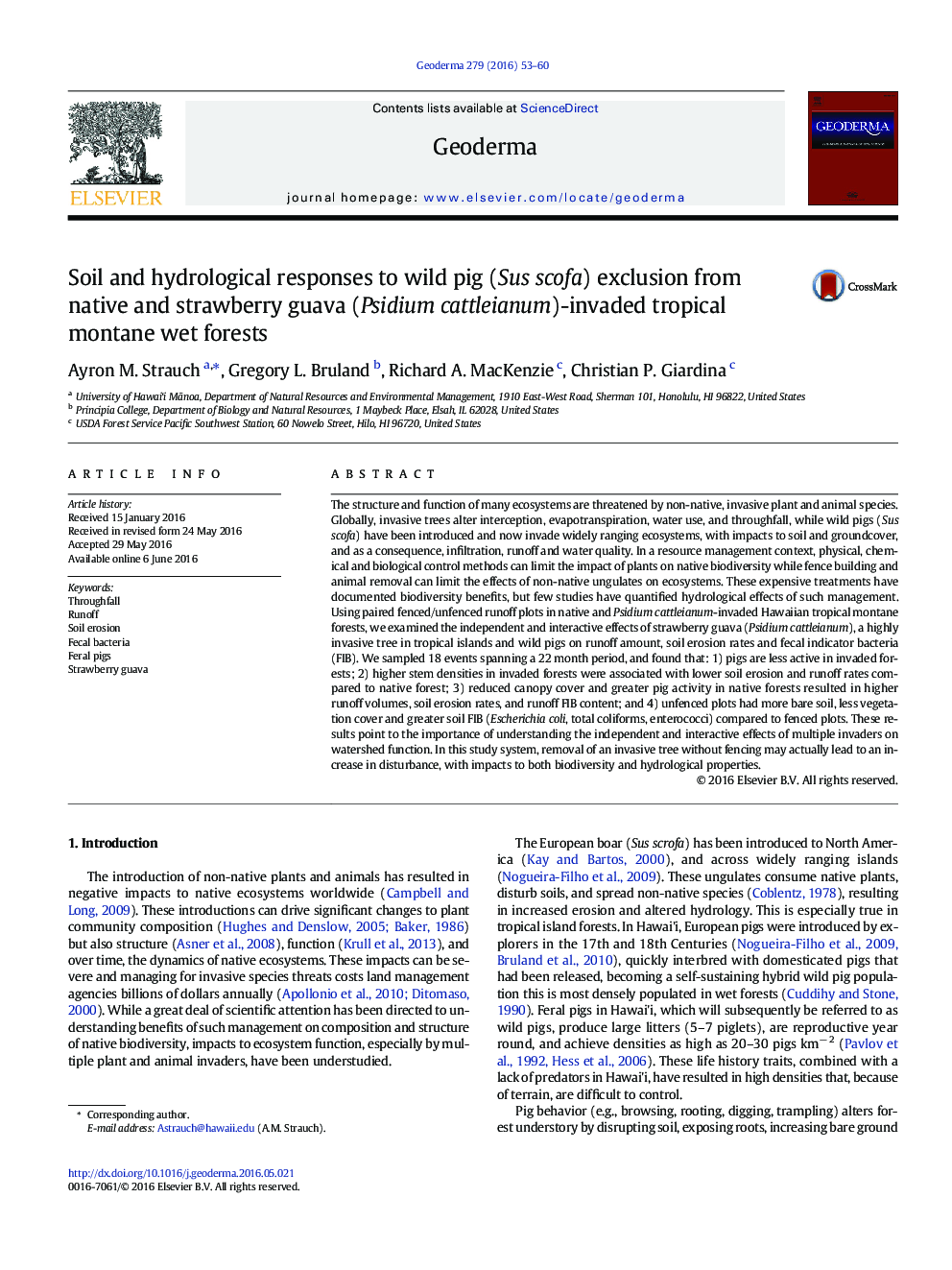| کد مقاله | کد نشریه | سال انتشار | مقاله انگلیسی | نسخه تمام متن |
|---|---|---|---|---|
| 6408310 | 1629438 | 2016 | 8 صفحه PDF | دانلود رایگان |

- Examined independent and interactive effects of two co-occurring invasive species
- Canopy differences between forests altered throughfall, runoff, and soil erosion.
- Soil organic matter and soil moisture differed between forests with soil depth.
- Wild pigs were less active in P. cattleianum invaded forests due to forest structure.
- Fencing reduced bare soil and soil bacteria while increasing vegetation cover.
The structure and function of many ecosystems are threatened by non-native, invasive plant and animal species. Globally, invasive trees alter interception, evapotranspiration, water use, and throughfall, while wild pigs (Sus scofa) have been introduced and now invade widely ranging ecosystems, with impacts to soil and groundcover, and as a consequence, infiltration, runoff and water quality. In a resource management context, physical, chemical and biological control methods can limit the impact of plants on native biodiversity while fence building and animal removal can limit the effects of non-native ungulates on ecosystems. These expensive treatments have documented biodiversity benefits, but few studies have quantified hydrological effects of such management. Using paired fenced/unfenced runoff plots in native and Psidium cattleianum-invaded Hawaiian tropical montane forests, we examined the independent and interactive effects of strawberry guava (Psidium cattleianum), a highly invasive tree in tropical islands and wild pigs on runoff amount, soil erosion rates and fecal indicator bacteria (FIB). We sampled 18 events spanning a 22Â month period, and found that: 1) pigs are less active in invaded forests; 2) higher stem densities in invaded forests were associated with lower soil erosion and runoff rates compared to native forest; 3) reduced canopy cover and greater pig activity in native forests resulted in higher runoff volumes, soil erosion rates, and runoff FIB content; and 4) unfenced plots had more bare soil, less vegetation cover and greater soil FIB (Escherichia coli, total coliforms, enterococci) compared to fenced plots. These results point to the importance of understanding the independent and interactive effects of multiple invaders on watershed function. In this study system, removal of an invasive tree without fencing may actually lead to an increase in disturbance, with impacts to both biodiversity and hydrological properties.
Journal: Geoderma - Volume 279, 1 October 2016, Pages 53-60